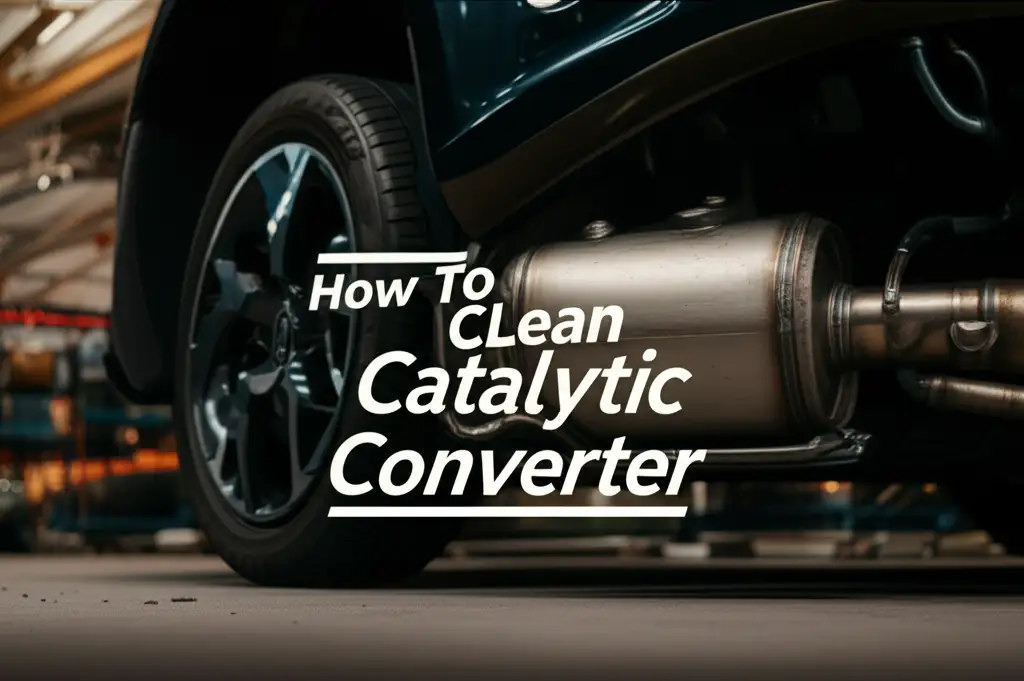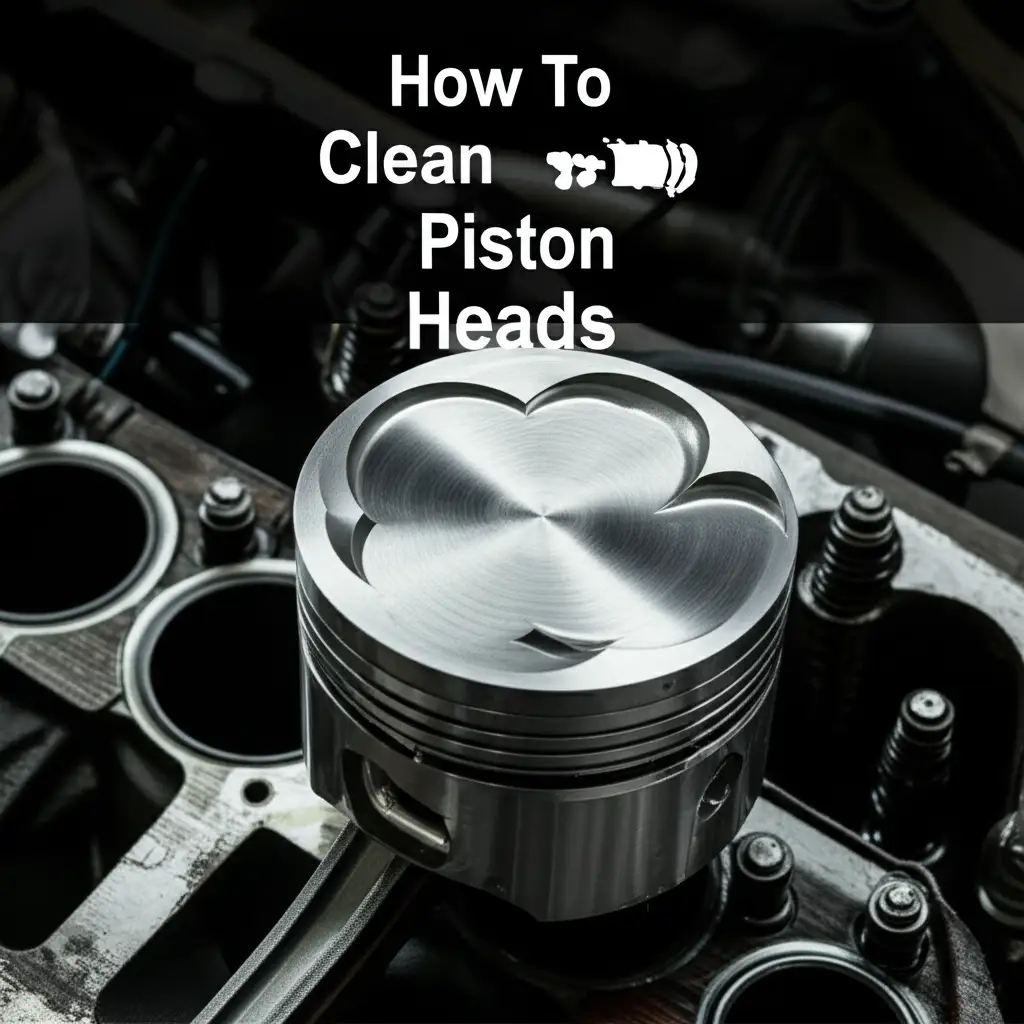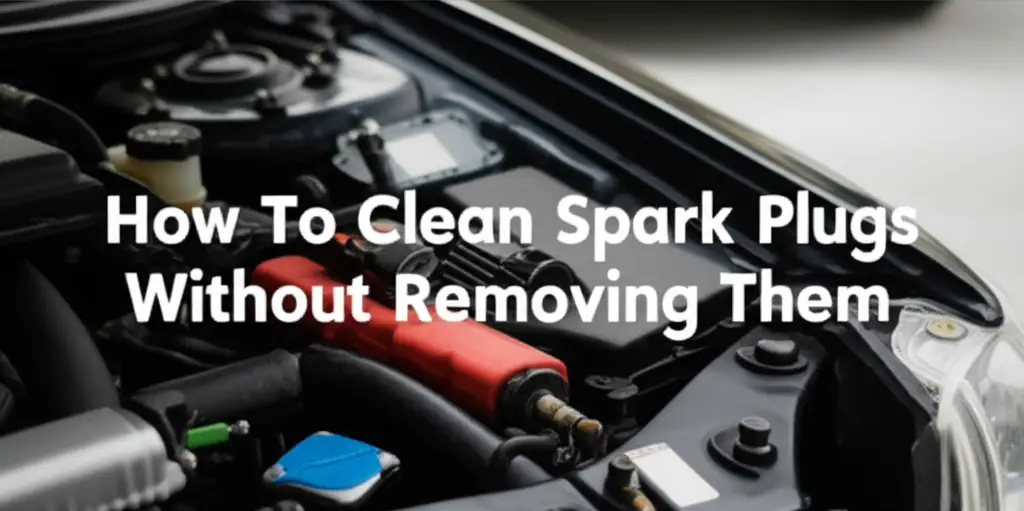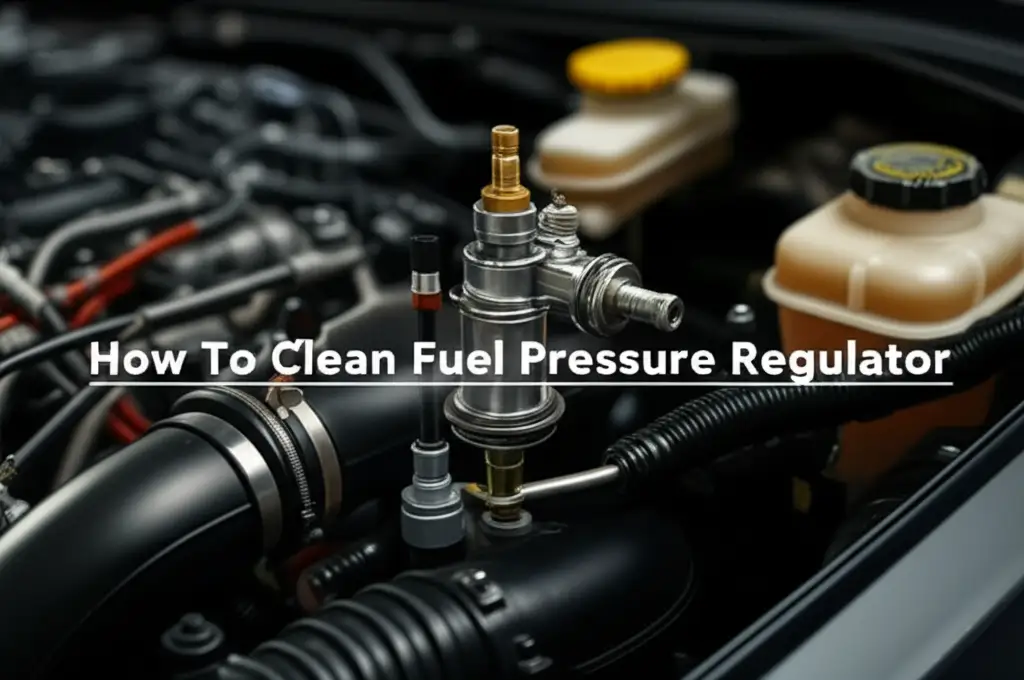· Automotive Maintenance · 17 min read
How To Clean Afe Dry Filter
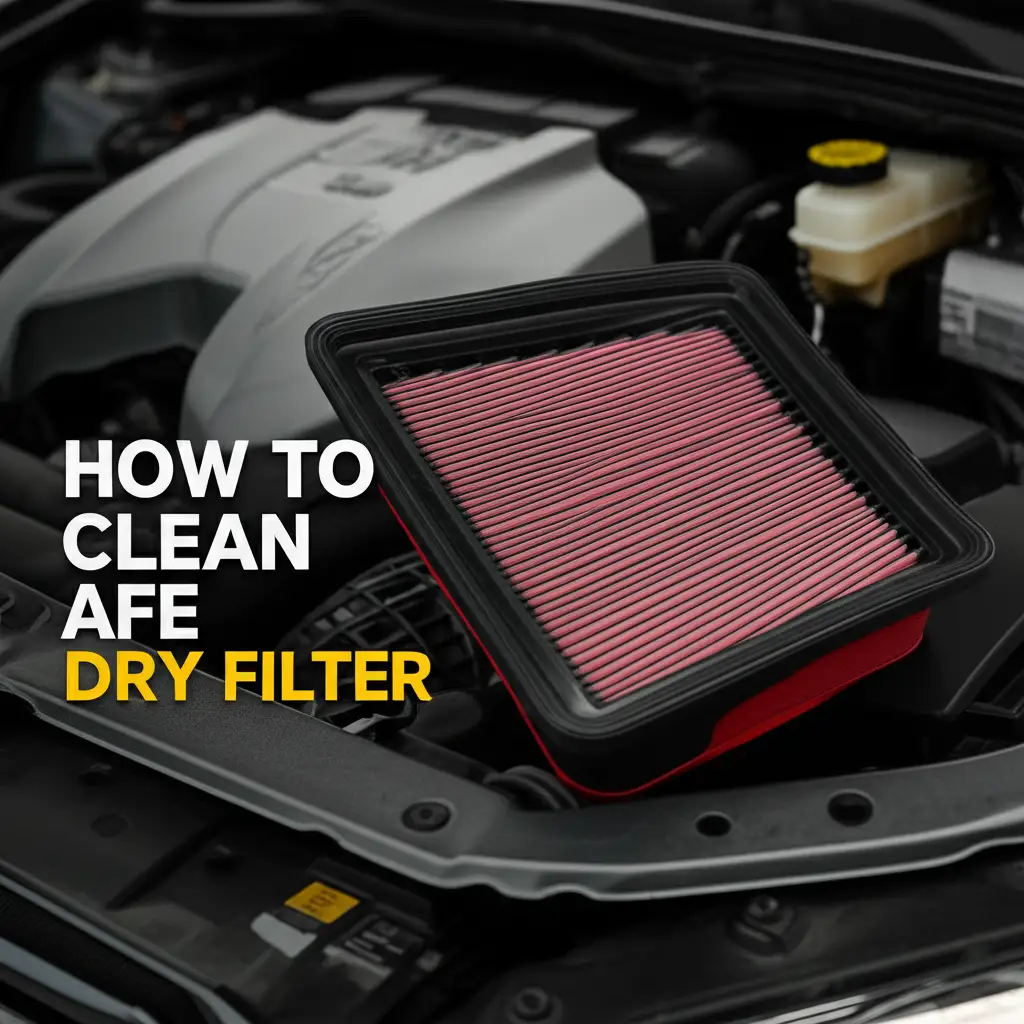
Clean Your aFe Dry Filter for Peak Engine Performance
Your car’s engine needs clean air to run its best. An aFe dry filter works hard to keep dirt out. Over time, this filter collects many particles. A dirty filter restricts airflow, which can reduce your vehicle’s power and efficiency. Learning how to clean an aFe dry filter helps your engine breathe freely. This guide gives you simple steps to restore your filter. We will cover everything from getting ready to putting the filter back in your car. Keeping your filter clean saves you money and boosts performance.
Takeaway
Regularly cleaning your aFe dry filter boosts engine performance and fuel economy.
- Use the correct aFe Restore Kit for dry filters.
- Never use oil on a dry filter.
- Allow the filter to air dry completely before reinstallation.
- Clean your filter based on your driving conditions, typically every 25,000 to 50,000 miles.
To clean an aFe dry filter, remove it from your vehicle. Use a soft brush or compressed air to remove loose debris. Apply the aFe dry filter cleaner and let it soak. Rinse the filter thoroughly from the inside out with low-pressure water. Allow it to air dry completely before reinstalling it in your vehicle.
Understanding Your aFe Dry Filter
aFe Power makes popular air filters for vehicles. Their dry filters are special. They do not need oil. This design is different from oiled filters. aFe dry filters use many layers of synthetic media. These layers trap dirt particles very well.
The aFe Pro DRY S filter is a common type. It offers good airflow and excellent filtration. Because it is a dry filter, cleaning is simpler. You do not need to apply oil after cleaning. This saves time and avoids mistakes with oil. Understanding your specific filter type helps you clean it the right way.
Why Choose an aFe Dry Filter?
Many car owners prefer aFe dry filters. They offer simple maintenance. You do not worry about oiling the filter. Oiling can be messy. It can also lead to over-oiling, which harms sensors.
Dry filters provide strong protection against dirt. They keep your engine clean. They also flow a lot of air. This helps your engine make more power. These filters often last a long time. Proper cleaning extends their life even further.
How Dry Filters Work
aFe dry filters use a unique design. They have multiple layers of non-woven synthetic material. These layers create a deep bed for trapping contaminants. Dirt particles get caught in these layers. The filter catches particles without relying on oil stickiness.
Air passes through these layers. Clean air then enters your engine. Over time, trapped dirt fills the filter’s surface. This reduces airflow. Cleaning removes this dirt. It restores the filter’s ability to flow air. This process keeps your engine performing well.
Gathering the Right Tools and Supplies
Before you start cleaning your aFe dry filter, get your tools ready. Having everything prepared makes the job easier. You will need specific items to clean a dry filter correctly. Using the wrong products can damage the filter.
aFe offers a special Restore Kit for their dry filters. This kit contains the correct cleaner. It also has instructions. Using the manufacturer’s recommended products is always best. This protects your investment.
Essential Cleaning Supplies
Here is what you will need for cleaning your aFe dry filter:
- aFe Restore Kit for Dry Filters: This kit includes the correct cleaning solution. It is designed to work with the synthetic media. Do not use cleaners meant for oiled filters.
- Soft Bristle Brush: A small, soft brush helps remove loose dirt. You can use a paint brush or a soft detailing brush.
- Low-Pressure Water Source: A garden hose with a spray nozzle works well. Avoid high-pressure washers. High pressure can damage the filter material.
- Clean Bucket or Container: This is for soaking the filter.
- Clean Towels or Rags: For wiping down surfaces and handling the filter.
- Gloves: Protect your hands from the cleaning solution.
- Safety Glasses: Protect your eyes from splashes.
It is important to read the specific instructions on your aFe Restore Kit. Different kits might have slightly different steps. Always follow the product guidelines for best results. Prepare your workspace by laying down old newspapers or a drop cloth. This keeps the area clean.
Step-by-Step aFe Dry Filter Cleaning Process
Cleaning your aFe dry filter is a straightforward task. Taking your time ensures a thorough clean. Follow these steps carefully to restore your filter’s performance. Remember, do not use oil on a dry filter.
1. Removing the Filter
First, locate your vehicle’s air intake system. The aFe dry filter sits inside the airbox. This box is usually easy to find under the hood.
- Open the Hood: Make sure your engine is off and cool. Open your vehicle’s hood.
- Locate the Airbox: The airbox is a large plastic housing. It usually connects to the engine with a large tube.
- Open the Airbox: Most airboxes use clips, screws, or clamps. Unlatch or unbolt these fasteners. Carefully open the airbox cover.
- Remove the Filter: Gently lift the aFe dry filter out of the airbox. Be careful not to drop any loose dirt into the intake.
- Inspect the Airbox: Look inside the airbox for any debris. Wipe it clean with a damp cloth if needed.
2. Initial Debris Removal
Before applying cleaner, remove any large debris. This helps the cleaner work better.
- Tap the Filter: Hold the filter over a trash can. Gently tap it on a hard surface. This knocks off loose dirt, leaves, and bugs.
- Brush Away Debris: Use a soft bristle brush. Gently brush the pleats of the filter. Brush from the inside out. This pushes dirt away from the clean side.
- Use Compressed Air (Optional): If you have an air compressor, use it carefully. Blow air through the filter from the clean side (inside) out. Use low pressure. High pressure can damage the filter media.
3. Applying the Cleaning Solution
Now it is time to apply the special aFe dry filter cleaner.
- Spray the Cleaner: Evenly spray the aFe dry filter cleaning solution onto the filter. Cover all pleats.
- Soak the Filter: Let the cleaner soak for 10-15 minutes. This allows the solution to break down dirt and grime. Do not let the cleaner dry on the filter.
- Submerge (Optional for heavily soiled filters): For very dirty filters, you might submerge it in a bucket of cleaner. Follow your aFe kit’s specific instructions for this.
4. Rinsing the Filter
Rinsing is a critical step. You must remove all cleaning solution and loosened dirt.
- Rinse from the Inside Out: Use a low-pressure water source, like a garden hose. Direct the water from the clean side (inside) of the filter. Let the water flow through the pleats and out the dirty side. This pushes dirt out.
- Continue Rinsing: Rinse until the water running off the filter is clear. This means all the dirt and cleaner are gone.
- Inspect: Look at the filter closely. Make sure no dirty spots remain. If you see any, repeat the cleaning and rinsing steps.
- Cleaning different types of air filters often involves similar principles of gentle washing and thorough rinsing. For example, cleaning a Dyson air filter also requires rinsing until water runs clear. Likewise, when you clean an air conditioner filter, you typically rinse from the clean side. The process for an aFe dry filter focuses on careful rinsing without harsh chemicals.
Proper Drying Techniques for aFe Dry Filters
After rinsing, drying your aFe dry filter correctly is crucial. This step is just as important as the cleaning itself. Improper drying can harm the filter or your engine. Never put a wet filter back into your vehicle.
aFe dry filters must be completely dry before reinstallation. This prevents water from entering your engine. It also makes sure the filter can properly capture new dirt. The dry synthetic media works best when moisture-free.
Why Proper Drying Matters
- Engine Safety: Water in the intake system can damage engine components.
- Filtration Efficiency: A damp filter might not filter air as effectively. It can also promote mold growth.
- Sensor Protection: Moisture can interfere with sensitive airflow sensors. These sensors help your engine run smoothly.
Recommended Drying Methods
Always air dry your aFe dry filter. This is the safest and most effective method.
- Air Dry Indoors: Place the filter in a clean, dry area. A garage or shed is ideal. Avoid direct sunlight. Sunlight can degrade the filter material over time.
- Elevate the Filter: You can place the filter on a rack or hang it. This allows air to circulate around all sides. Good airflow speeds up drying.
- Allow Ample Time: Drying can take several hours, or even a full day. This depends on humidity and temperature. Patience is key here. Do not rush the process.
- Check for Dryness: Before reinstalling, feel the filter all over. It must be dry to the touch. The material should feel light and crisp. If it still feels damp, let it dry longer.
Methods to Avoid
- Heat Guns or Hair Dryers: Do not use heat. High heat can melt or deform the synthetic filter media. This permanently damages the filter.
- Compressed Air for Drying: Do not use compressed air to speed up drying. This can tear the filter pleats. It can also push water deeper into the material.
- Oven or Microwave: Never put your filter in an oven or microwave. This will destroy the filter.
- Different air filter types have unique drying needs. For instance, a foam air filter might require squeezing out excess water and gentle drying. Similarly, maintaining a chainsaw air filter also stresses the importance of complete drying to prevent engine issues. Always follow specific drying instructions for your filter type to ensure longevity and performance.
Reinstallation and Post-Cleaning Checks
Once your aFe dry filter is completely dry, it is time to put it back in your vehicle. Reinstallation is generally simple. Making sure everything is secure prevents future problems. A properly installed filter ensures your engine gets clean air.
After reinstallation, it is good practice to do some quick checks. These checks confirm that everything is in place. They also help you notice any immediate benefits. You want your engine to perform its best right away.
Installing Your Clean Filter
Follow these steps for a smooth reinstallation:
- Inspect the Filter Again: Give the filter one last look. Confirm it is fully dry and free of damage. Make sure no debris has settled on it during drying.
- Place in Airbox: Gently lower the clean aFe dry filter back into its housing. Ensure it sits correctly in the airbox. It should fit snugly.
- Close the Airbox: Put the airbox cover back on. Make sure it aligns perfectly. Reattach all clips, screws, or clamps. Tighten them securely. Do not overtighten, especially plastic parts.
- Reconnect Hoses (if applicable): If you disconnected any hoses or sensors during removal, reattach them. Ensure all connections are tight. This prevents air leaks.
Post-Cleaning Checks
After reinstallation, take a moment to confirm everything is right.
- Double-Check Fasteners: Look over all clips and screws. Ensure they are all closed or tightened.
- Inspect Hoses and Connections: Make sure all intake hoses are secure. Check for any loose clamps. Listen for any hissing sounds when the engine runs, which could indicate a leak.
- Start the Engine: Turn on your vehicle. Listen for any unusual sounds. The engine should run smoothly. You might notice an immediate improvement in throttle response.
- Test Drive: Take your vehicle for a short drive. Pay attention to engine feel. You may experience better acceleration and a smoother ride. These are signs of improved airflow.
Reinstalling an aFe dry filter is similar to replacing other engine air filters, like those found in motorcycles or ATVs. The goal is always a secure fit to prevent unfiltered air from reaching the engine. For a high-performance filter like an aFe, proper reinstallation ensures your investment in a quality filter pays off.
When to Clean and When to Replace Your aFe Dry Filter
Knowing when to clean your aFe dry filter is as important as knowing how. Regular maintenance keeps your engine performing well. However, filters do not last forever. Sometimes, replacement is the better option.
Your driving conditions play a big role in how often you need to clean your filter. Driving in dusty areas will require more frequent cleaning. Less dusty conditions allow for longer intervals. Pay attention to your vehicle’s performance. It often tells you when something is off.
Cleaning Frequency Guidelines
- Manufacturer Recommendations: aFe Power generally recommends cleaning their Pro DRY S filters every 25,000 to 50,000 miles. Always check your specific filter’s manual for precise guidelines.
- Driving Conditions:
- Normal Driving: If you mostly drive on paved roads in clean air, cleaning every 30,000-50,000 miles is fine.
- Dusty Conditions: If you drive on dirt roads, through construction zones, or in very dusty environments, clean your filter more often. This could be every 10,000-15,000 miles.
- Visual Inspection: Regularly check your filter. If it looks very dirty, caked with dust, or discolored, it is time for a clean.
- Regular maintenance is key for all air filters. For example, cleaning a Spectre air filter or an AEM air filter follows similar rules regarding mileage and visual inspection. These performance filters also benefit greatly from timely cleaning.
Signs It is Time to Clean or Replace
Your vehicle might give you clues that its air filter needs attention:
- Reduced Fuel Economy: A dirty filter can make your engine work harder. This leads to using more fuel.
- Loss of Horsepower: You might notice your car feels sluggish. It may struggle to accelerate.
- Engine Misfires or Rough Idling: A very dirty filter can disrupt the air-fuel mixture. This causes engine problems.
- Check Engine Light: In severe cases, a very restricted airflow can trigger your check engine light.
- Visible Dirt: The most obvious sign is a filter that looks heavily soiled.
When to Replace the Filter
Even with proper cleaning, a filter will eventually wear out.
- Damage: Look for tears, holes, or bent pleats. Any physical damage means the filter can no longer protect your engine. Replace it immediately.
- Degradation: Over many years, the filter material can degrade. It might become brittle or lose its structural integrity. If it feels weak or falls apart, replace it.
- Excessive Oil Contamination (for dry filters): If a dry filter has accidentally been oiled, or is excessively stained in a way that cleaning does not resolve, replacement might be necessary. This is rare but important to note.
- Age: Even if it looks okay, a filter that is many years old (e.g., 5-7 years) might benefit from replacement. Materials can break down over time.
Investing in a new aFe dry filter ensures your engine continues to receive the best possible air filtration.
Common Mistakes to Avoid When Cleaning aFe Dry Filters
Cleaning an aFe dry filter is simple, but certain mistakes can damage the filter. Avoiding these errors ensures your filter lasts long. It also protects your engine from potential harm. Understanding common pitfalls helps you perform the cleaning correctly.
The goal is to clean the filter gently and thoroughly. Using improper methods can reduce the filter’s effectiveness. It can even lead to costly engine repairs down the line. Always prioritize the health of your filter and engine.
Mistake 1: Using the Wrong Cleaning Solution
This is perhaps the biggest mistake. aFe dry filters use synthetic media. They need a specific non-oiling cleaner.
- Problem: Using an oiled filter cleaner on a dry filter will ruin it. The oil will clog the synthetic fibers. This makes the filter useless. It can also contaminate sensitive sensors in your intake.
- Solution: Always use the aFe Restore Kit specifically designed for aFe dry filters (e.g., aFe Pro DRY S Restore Kit). Read the product label carefully.
Mistake 2: Using High-Pressure Water or Air
Pressure can damage the delicate filter pleats.
- Problem: A pressure washer or high-pressure air nozzle can tear the synthetic filter material. This creates holes in the filter. Unfiltered air can then reach your engine.
- Solution: Use a low-pressure water hose. When using compressed air for initial debris removal, keep the pressure very low. Always blow from the inside out.
Mistake 3: Improper Drying
Not drying the filter completely or using heat sources is harmful.
- Problem: Reinstalling a damp filter introduces moisture into your engine. This can cause severe damage. Using heat (like a hair dryer or oven) can melt or warp the filter media.
- Solution: Always air dry the filter in a clean, well-ventilated area. Allow plenty of time for it to dry completely. This can take 12-24 hours. Be patient.
Mistake 4: Not Cleaning from the Inside Out
The direction of rinsing matters.
- Problem: Rinsing from the outside in pushes dirt deeper into the filter pleats. This makes it harder to remove the dirt. It also makes the clean side dirty.
- Solution: Always rinse the filter from the inside out. This pushes dirt away from the clean side and out of the filter.
Mistake 5: Over-Cleaning
While regular cleaning is good, excessive cleaning can cause wear.
- Problem: Cleaning too often can accelerate wear on the filter material. It can degrade the fibers over time.
- Solution: Follow aFe’s recommended cleaning intervals (25,000-50,000 miles). Only clean more frequently if driving in very dusty conditions. Visually inspect the filter before cleaning.
By avoiding these common mistakes, you ensure your aFe dry filter stays in top condition. This provides optimal protection and performance for your vehicle. Proper care extends the life of your filter.
Frequently Asked Questions About Cleaning aFe Dry Filters
How often should I clean my aFe dry filter?
You should clean your aFe dry filter every 25,000 to 50,000 miles under normal driving conditions. If you often drive on dirt roads or in very dusty environments, consider cleaning it more frequently. Visually inspect your filter regularly for heavy dirt buildup. Early cleaning prevents reduced engine performance.
Can I use soap and water to clean my aFe dry filter?
No, do not use regular soap and water. Common household soaps can leave residues or contain chemicals that might damage the synthetic filter media. Always use the specific aFe Restore Kit designed for dry filters. This kit includes the proper cleaning solution which protects the filter material.
Do aFe dry filters need oil?
No, aFe dry filters do not need oil. They are designed to filter air without the use of oil. Attempting to oil a dry filter will ruin it. It will clog the filter media and could harm sensitive airflow sensors in your vehicle’s engine. Always confirm you have a dry filter before cleaning.
How long does an aFe dry filter take to dry?
An aFe dry filter typically takes 12 to 24 hours to dry completely. The actual drying time depends on factors like ambient temperature and humidity. Place the filter in a clean, dry area with good airflow. Do not use heat sources like hair dryers or direct sunlight, as these can damage the filter material.
What happens if I don’t clean my aFe dry filter?
If you do not clean your aFe dry filter, it will become clogged with dirt and debris. This reduces airflow to your engine. Consequences include decreased engine horsepower, poorer fuel economy, and potentially engine misfires. A very dirty filter can also trigger your vehicle’s check engine light due to restricted airflow.
Can a dirty aFe filter affect fuel economy?
Yes, a dirty aFe filter can significantly affect your vehicle’s fuel economy. When the filter is clogged, your engine has to work harder to pull in enough air. This increased effort leads to greater fuel consumption. Cleaning your aFe dry filter regularly ensures optimal airflow, helping your engine run efficiently and maintain good gas mileage.
Conclusion
Cleaning your aFe dry filter is a vital part of vehicle maintenance. It ensures your engine breathes clean air. This helps maintain peak engine performance and fuel efficiency. You have learned the importance of using the right tools. You also know the precise steps for cleaning, drying, and reinstallation. Remember, aFe dry filters never need oil.
By following this guide, you can extend the life of your aFe dry filter. You also avoid common mistakes that can harm your filter or engine. Regular care of your aFe dry filter contributes to a healthier, more powerful vehicle. Take action today. Perform this simple maintenance task. Your engine will thank you.
- aFe filter
- dry air filter
- engine performance
- filter cleaning

